In the quest for a firm, toned body after major weight loss, many individuals turn to various strategies to manage loose skin, a common concern after shedding significant pounds. Among the plethora of methods discussed in health and beauty circles, waist training has emerged as a particularly popular topic. Waist training, often touted as a non-invasive solution for reshaping the midsection, has gained a reputation for enhancing posture and temporarily reducing waist circumference. But the pressing question remains: can waist training help with loose skin after weight loss in a meaningful and lasting way? This article explores the science, myths, and realities behind waist training, offering evidence-based insights for those hoping to improve their skin’s appearance and reclaim their confidence.
You may also like: How to Tighten Loose Skin After Weight Loss: Science-Backed Strategies for a Firmer, Healthier You
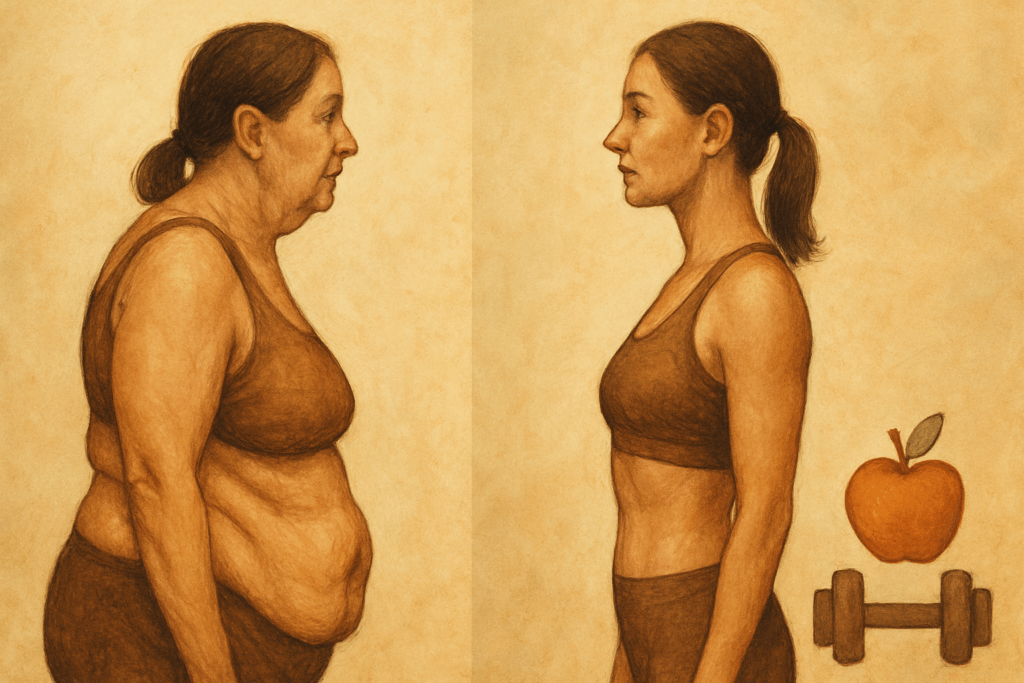
Understanding Loose Skin After Weight Loss
Loose skin is a frequent and natural consequence of significant weight loss. As the body expands with weight gain, the skin stretches to accommodate the added mass. Over time, this stretching can damage the skin’s elastic fibers, particularly collagen and elastin, which are crucial for maintaining firmness and resilience. When a person loses a large amount of weight, especially rapidly, the skin may not fully retract to its original tightness. Factors influencing this phenomenon include age, genetics, the amount of weight lost, the speed of weight loss, and the skin’s pre-existing condition. Individuals who lose weight gradually and support the process with strength training and good nutrition often experience less pronounced sagging, but loose skin can still persist as a stubborn reminder of the body’s former state.
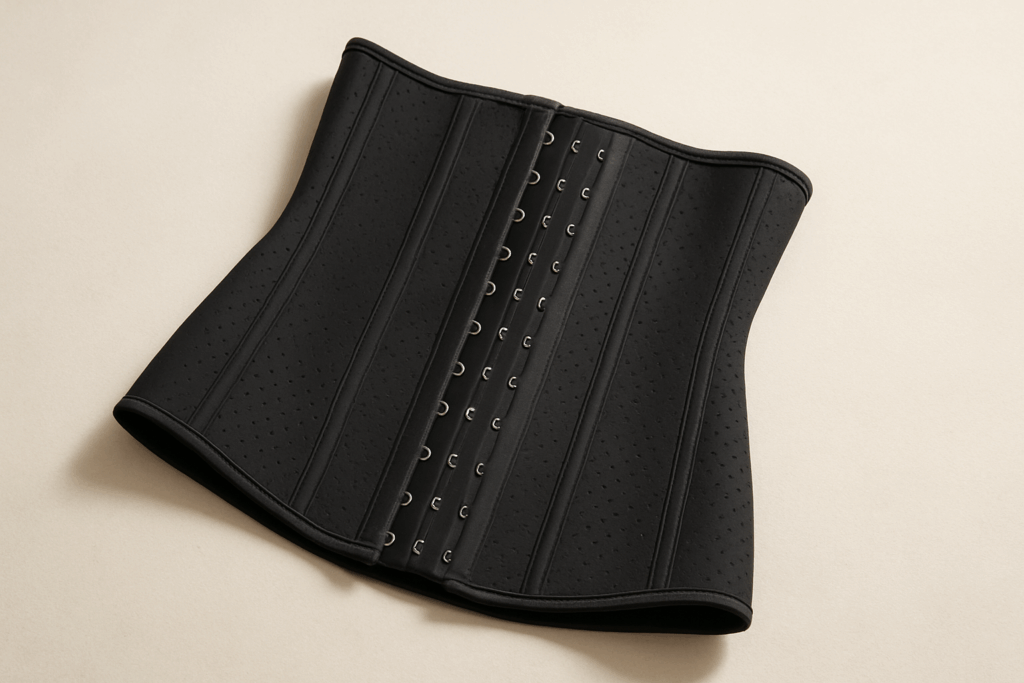
The Fundamentals of Waist Training
Waist training involves the consistent wearing of a compression garment, commonly known as a waist trainer, to cinch the midsection into a more desirable shape. Traditionally associated with Victorian-era corsets, modern waist trainers are marketed as fitness aids that promise a slimmer waist, improved posture, and enhanced workout results. Advocates of waist training claim that the constant pressure exerted by the garment helps “train” the body into a narrower silhouette over time. Some proponents further argue that waist training can assist in managing loose skin by compressing and supporting it, leading to a smoother, firmer appearance. However, separating marketing hype from physiological reality is critical when evaluating these claims.
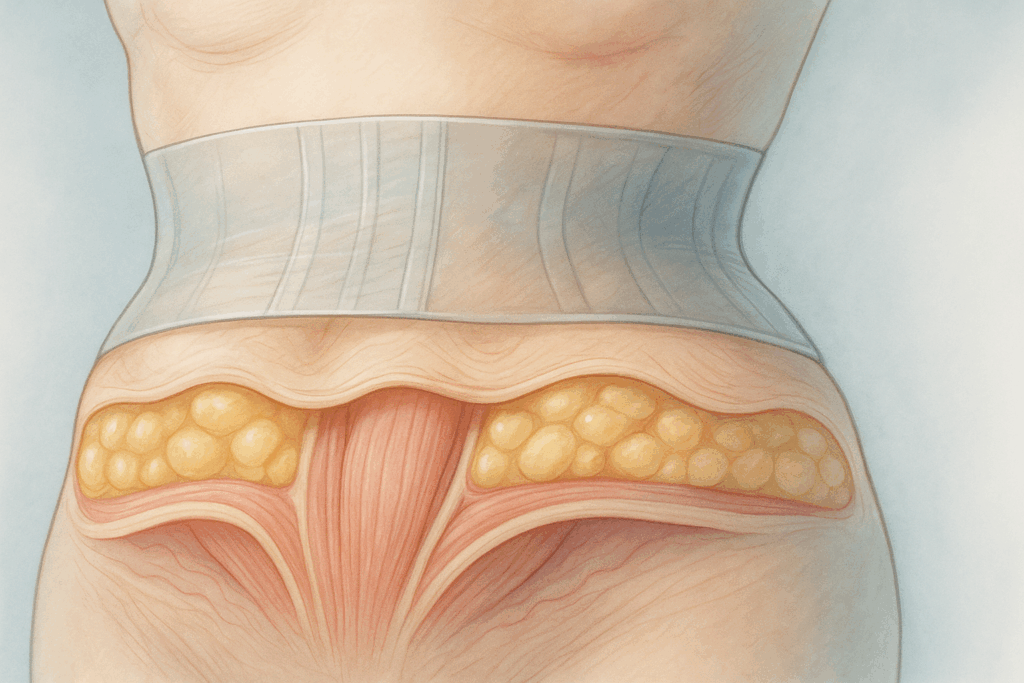
Waist Training and Loose Skin: What Science Says
Scientific research on waist training is limited, particularly regarding its long-term effects on loose skin. Compression garments, in general, have been used in medical settings to manage edema and support skin healing after surgeries, such as abdominoplasty or liposuction. These garments help reduce swelling and may support tissues during the healing process, which could theoretically offer benefits to post-weight-loss skin. However, wearing a waist trainer for aesthetic purposes differs significantly from medically supervised compression therapy. While some temporary skin smoothing may occur while wearing a waist trainer, there is scant evidence to suggest that waist training can permanently tighten loose skin. Instead, any improvements seen are often the result of the garment physically holding the skin in place rather than initiating genuine biological change.
Will Waist Training Help with Loose Skin? Immediate vs. Long-Term Effects
The question “will waist training help with loose skin?” necessitates a distinction between immediate visual effects and sustainable physiological changes. When a person wears a waist trainer, they may notice an instant reduction in waist size and a smoother skin appearance. This effect, however, is primarily cosmetic and temporary, lasting only as long as the garment is worn. Long-term transformation of loose skin requires underlying biological changes, such as the production of new collagen and elastin fibers. These processes are influenced by factors like nutrition, hydration, genetics, and skin care practices—not mechanical compression alone. Therefore, while waist training can create the illusion of tighter skin during use, it does not actively regenerate or repair skin structure over time.
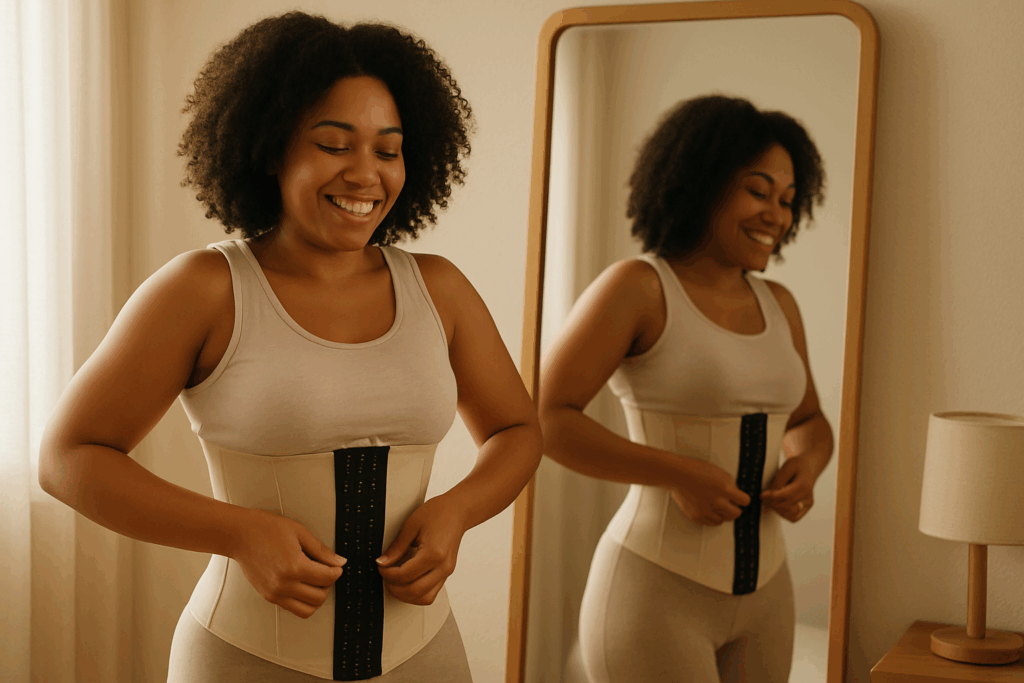
The Psychological Impact of Waist Training on Body Image
An often-overlooked aspect of waist training is its psychological impact. For many individuals, wearing a waist trainer provides a boost in confidence by instantly creating a smoother, more streamlined figure. This immediate gratification can serve as a powerful motivator during the weight loss journey or maintenance phase, encouraging continued healthy habits. However, reliance on external compression to achieve desired body contours can also lead to unrealistic expectations or dissatisfaction with natural body shape. It is essential for users to approach waist training with a healthy mindset, viewing it as a temporary aesthetic tool rather than a permanent solution for loose skin.
The Vital Role of Skin Health in Managing Loose Skin
Managing loose skin effectively involves more than mechanical solutions like waist training. Skin health plays a crucial role in the body’s ability to maintain elasticity and resilience. Nutrients such as vitamins C and E, collagen peptides, and antioxidants support skin repair and elasticity at a cellular level. Hydration, both internal and external, also contributes to skin plumpness and flexibility. Incorporating a high-protein diet, strength training exercises to build underlying muscle mass, and targeted skin care treatments—such as retinoids and hyaluronic acid serums—can synergistically improve the appearance of loose skin. While waist training can provide temporary support, it is not a substitute for these holistic, health-driven strategies.
Can Waist Training Help with Loose Skin: A Look at Compression Therapy
To more accurately assess the question “can waist training help with loose skin?” it is helpful to examine the broader concept of compression therapy. In clinical contexts, compression garments are utilized post-surgery to aid in skin retraction and reduce fluid accumulation. These garments are designed based on specific medical principles and are worn under professional supervision. Waist trainers, on the other hand, are often mass-produced without individualized fitting or medical oversight. While compression can support tissues externally, true skin remodeling requires biological stimulation, such as collagen synthesis, which waist trainers alone cannot induce. Hence, while waist training may offer some superficial benefits, it should not be mistaken for therapeutic compression treatment.
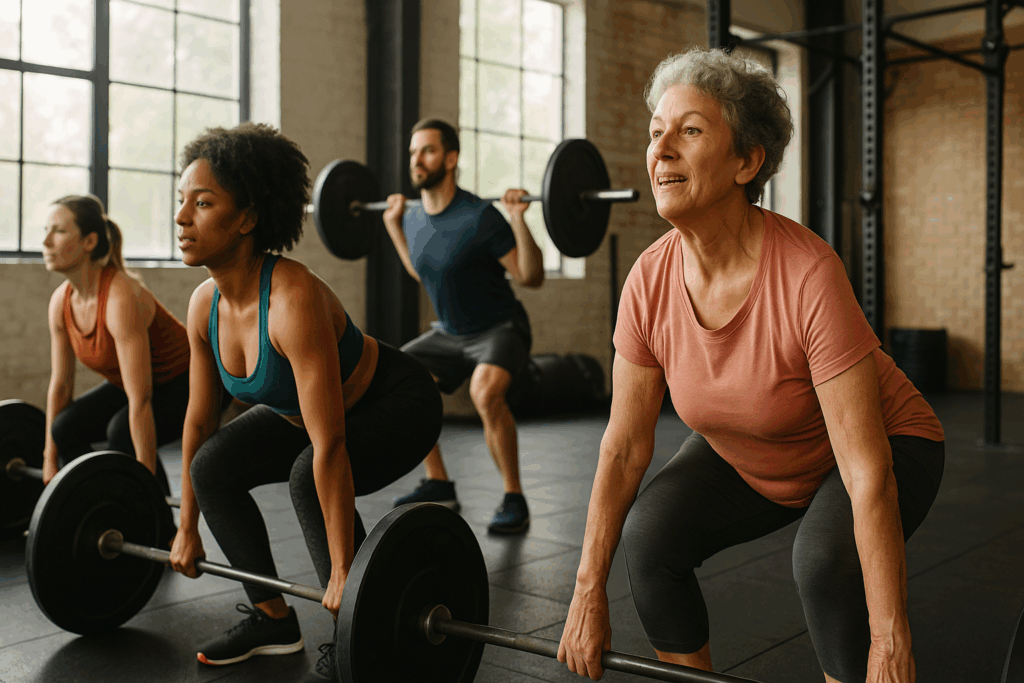
The Intersection of Fitness, Weight Training, and Skin Tightening
A robust fitness regimen, particularly one emphasizing weight training, offers far more sustainable benefits for managing loose skin than waist training. Resistance exercises stimulate muscle growth, providing underlying support to skin that might otherwise sag. By filling out areas of lost volume with lean muscle, individuals can achieve a firmer, more toned appearance. Furthermore, weight-bearing exercise promotes blood circulation and lymphatic drainage, which are vital for skin health and healing. Combining consistent strength training with proper nutrition and skin care creates a multi-pronged approach that addresses the root causes of loose skin rather than masking them temporarily.
Waist Training for Loose Skin: Temporary Support, Not a Cure
Ultimately, waist training for loose skin should be viewed as a form of temporary support rather than a curative solution. Wearing a waist trainer can offer a psychological boost and create a sleeker appearance for special occasions or during transitional phases of weight loss. However, relying solely on waist training to resolve loose skin issues is unrealistic and potentially detrimental if it diverts attention from more effective, holistic strategies. Integrating waist training as one component of a broader self-care regimen—which includes strength training, proper hydration, balanced nutrition, and evidence-based skin care—offers a more balanced and sustainable path to improved body confidence.

Evaluating the Risks and Limitations of Waist Training
It is important to recognize that waist training is not without risks. Prolonged or excessively tight waist training can compress internal organs, restrict breathing, and lead to digestive issues such as acid reflux. Overuse may also weaken core muscles over time, counteracting the goal of a stronger, more resilient midsection. Skin irritation, chafing, and reduced blood flow are additional potential side effects. Therefore, individuals considering waist training should do so with caution, adhering to recommended usage guidelines and ensuring that the garment fits properly. Consultation with a healthcare provider or fitness professional can provide personalized advice and help mitigate potential risks.
Will Waist Training Help with Loose Skin in Older Adults?
Age is a significant factor influencing skin elasticity. As individuals age, their bodies produce less collagen and elastin, making skin more prone to sagging after weight loss. For older adults, the question “will waist training help with loose skin?” must be approached with tempered expectations. While a waist trainer may offer temporary aesthetic improvements, older skin may require more intensive interventions to achieve lasting firmness. Non-invasive procedures such as radiofrequency skin tightening, ultrasound therapy, and laser treatments are more scientifically supported options for stimulating collagen production in aging skin. Nonetheless, a waist trainer can still serve as a supportive tool for enhancing self-image and providing temporary improvements in appearance.
Practical Tips for Using Waist Training Responsibly
For those who wish to incorporate waist training into their loose skin management strategy, responsible usage is paramount. Selecting a high-quality garment made from breathable, flexible materials is essential for comfort and skin health. Start with shorter wear periods—such as one to two hours per day—and gradually increase duration as tolerated. Listen to your body’s signals: pain, numbness, or difficulty breathing are clear indicators to remove the garment immediately. Combining waist training with consistent exercise, good posture habits, and targeted skin care practices will yield more satisfying and sustainable results than relying on compression alone. Always remember that waist training is an adjunct, not a replacement, for comprehensive self-care.
Holistic Strategies to Improve Loose Skin After Weight Loss
Incorporating holistic strategies offers the most effective approach to improving loose skin after weight loss. Focusing on nutrition that supports skin health—rich in antioxidants, healthy fats, and collagen-boosting nutrients—provides the body with the building blocks needed for repair. Regular strength training builds muscle mass, helping to “fill out” loose skin and create a firmer appearance. Skin care routines that include retinoids, vitamin C serums, and moisturizing treatments can enhance skin texture and resilience over time. Non-invasive medical treatments, such as microneedling, ultrasound therapy, and radiofrequency skin tightening, offer additional options for those seeking more dramatic improvements without surgery. Waist training can complement these efforts by offering temporary support, but it is not a standalone solution.
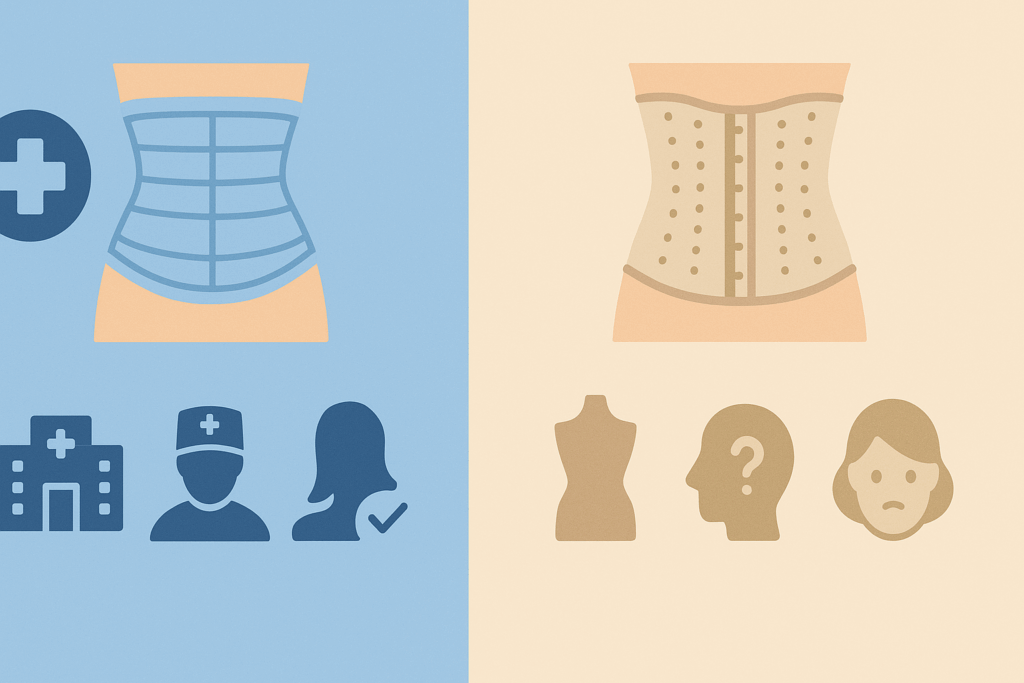
Can Waist Training Help with Loose Skin: Final Verdict
After extensive analysis, the answer to “can waist training help with loose skin?” is nuanced. Waist training can provide temporary compression that improves the appearance of the midsection while worn. It can also offer psychological benefits by boosting self-esteem during the weight loss journey. However, it does not fundamentally alter skin structure, regenerate collagen, or replace the need for comprehensive health practices. True and lasting improvement in loose skin results from a multifaceted approach involving nutrition, exercise, skin care, and in some cases, professional medical treatments.
Frequently Asked Questions: Waist Training and Loose Skin After Weight Loss
Can Waist Training Help with Loose Skin After Significant Weight Loss?
Waist training can offer temporary visual improvements to the appearance of loose skin, but it does not fundamentally change the skin’s elasticity. After significant weight loss, skin has usually been stretched beyond its natural capacity to retract. While wearing a waist trainer might smooth and compress loose skin during use, it will not stimulate collagen production or tissue remodeling, which are necessary for long-term tightening. For lasting improvement, interventions like strength training, advanced skin care treatments, and medical procedures such as radiofrequency therapy are far more effective. Waist training may provide emotional comfort, but users should view it as a supportive, aesthetic tool rather than a permanent solution.
Will Waist Training Help with Loose Skin in Combination with Other Treatments?
When combined with more scientifically validated methods, waist training can contribute to a broader strategy for managing loose skin. For example, using a waist trainer after applying firming serums may help lock in moisture and create a smoother temporary surface. However, the real work happens at the cellular level, where ingredients like retinol and peptides encourage skin renewal. In conjunction with microneedling or ultrasound therapies, waist training could offer additional comfort and aesthetic enhancement during the healing phases. It is important to set realistic expectations: waist training complements, but does not replace, treatments that target the deeper structures of the skin.
How Does Waist Training Compare to Medical Compression Garments for Loose Skin?
While both waist training and medical-grade compression garments provide external support, their purposes and designs differ substantially. Medical compression garments are tailored for post-surgical recovery, promoting blood circulation and minimizing fluid buildup. They are scientifically engineered with specific pressure gradients and breathable materials. Waist trainers, by contrast, are typically made for cosmetic purposes and lack the nuanced medical functionality necessary for therapeutic benefits. Therefore, while waist training might create a temporary appearance of tighter skin, it should not be confused with the rigorous standards of medical compression therapy.
Can Waist Training Help with Loose Skin in Specific Problem Areas?
Waist training predominantly targets the midsection, which means it may offer some superficial improvements for loose skin around the abdomen. However, it does little for other common problem areas such as the upper arms, thighs, or neck. For individuals concerned with multiple areas of loose skin, a more comprehensive strategy—including tailored exercises, topical treatments, and professional interventions—is necessary. Some users find that wearing additional compression garments for arms or legs can replicate the temporary effects seen with waist training on the torso. Ultimately, localized strategies combined with whole-body health practices provide a broader, more sustainable solution.
Will Waist Training Help with Loose Skin in People Who Have Had Bariatric Surgery?
For individuals who have undergone bariatric surgery, loose skin is often more pronounced and persistent. In these cases, will waist training help with loose skin to a meaningful degree? Unfortunately, the answer remains limited. Post-bariatric skin often requires more intensive solutions, such as body contouring surgeries or medically supervised skin-tightening procedures. Waist training can offer aesthetic support under clothing and may improve confidence during the weight stabilization period. However, for truly transformative results, a comprehensive plan involving medical professionals is often necessary.
Does the Duration of Waist Training Influence Its Effectiveness on Loose Skin?
Some proponents argue that extended wear increases the benefits of waist training, but current evidence does not support this for loose skin improvement. Prolonged compression may create more noticeable temporary shaping, but it does not trigger skin regeneration or elastin synthesis. In fact, overuse can lead to muscle weakening, reduced core strength, and other health risks. Moderation is key: wearing a waist trainer for a few hours a day can provide cosmetic smoothing without compromising health. For lasting improvements to loose skin, integrating skin-firming treatments and muscle-strengthening exercises remains far superior to relying on longer waist training sessions.
Can Waist Training Help with Loose Skin During Postpartum Recovery?
Postpartum women often explore waist training to regain their pre-pregnancy body shape, including addressing loose abdominal skin. While waist training can assist in providing abdominal support and improving posture temporarily, it is not a substitute for the natural recovery process the body undergoes after childbirth. Gentle core rehabilitation exercises, such as those targeting the transverse abdominis, are more effective for genuine toning and strengthening. Additionally, topical treatments rich in collagen boosters can help expedite skin recovery. Waist training during postpartum recovery should be seen as one component of a multifaceted, gentle approach to healing.
Waist Training for Loose Skin: Does Age Make a Difference?
Age is a major factor in determining how effective waist training might appear for loose skin. Younger skin typically has more abundant collagen and elastin, allowing for better natural rebound. Thus, younger individuals may see more immediate visual smoothing with waist training, though the effect remains temporary. Older individuals, whose skin has less natural elasticity, may find that even the cosmetic benefits are less pronounced. For aging skin, combining waist training with medical-grade treatments such as fractional laser therapy or collagen induction procedures is a more promising path toward long-term improvement.
Will Waist Training Help with Loose Skin If Combined with Skin-Firming Supplements?
Using skin-firming supplements while practicing waist training may create a synergistic, if subtle, improvement in skin appearance. Supplements containing collagen peptides, hyaluronic acid, and antioxidants like vitamin C support the skin’s structure from within. While waist training compresses the skin externally, supplements nurture elasticity internally. However, it is essential to understand that neither method alone—nor even in combination—can guarantee dramatic changes without broader lifestyle factors like diet, hydration, and exercise. For the best outcomes, waist training should be paired with a holistic regimen designed to optimize skin health on multiple levels.
Can Waist Training Help with Loose Skin: What Future Innovations May Offer
As technology advances, the future of managing loose skin with non-invasive methods looks promising. New waist training designs integrating infrared technology or vibration therapy are being explored to enhance blood flow and stimulate collagen synthesis. These innovations aim to move waist training beyond simple compression toward actively supporting skin health. While these devices are still largely experimental, early results suggest that merging traditional waist training with therapeutic technologies may offer more meaningful benefits. Until these innovations are widely available, consumers should approach current waist training options with realistic expectations and prioritize evidence-based treatments for lasting results.
The Vital Truth: Waist Training Is a Temporary Tool, Not a Transformation
Ultimately, waist training occupies a place within the broader context of post-weight-loss self-care, but it should not be mistaken for a magic bullet. The vital truth is that while waist training can offer temporary cosmetic benefits and emotional support, it is not a scientifically validated method for tightening loose skin long-term. A holistic approach—encompassing internal health, external care, and, when necessary, professional intervention—is the most effective strategy for managing the complex and deeply personal challenge of loose skin after weight loss. By understanding the true capabilities and limitations of waist training, individuals can make empowered, informed choices on their journey to achieving a healthier, more confident body.
Further Reading:
Why Waist Trainers Aren’t the Same as Shapewear (and Other Things You Should Know)